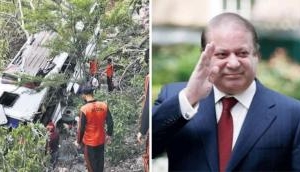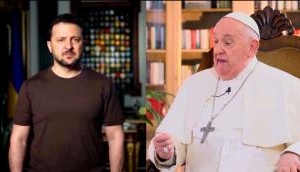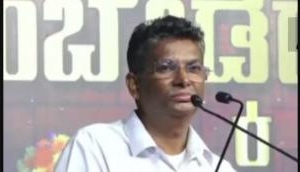
What has shifted
- Economic interests have taken precedence, leading to friendlier relations with China as well as the US.
- Greater focus on SAARC countries will bode well for India.
- The use of soft power and cultural interests sets Modi apart from predecessors.
- Greater informality and connecting with citizens has made him a sociable leader the world over.
What has stayed the same
- Diplomacy with advanced economies such as Australia, Japan and European nations.
- Has toed the previously established line on nuclear, health and trade issues.
What lies ahead
- Possible clash of interests with Pakistan and China will have to be dealt with deftly.
- Issues of climate change and terrorism will hound Modi on his foreign visits and summit meetings.
- Modi\'s delicate relationship with the media will need to be finessed.
Prime Minister Narendra Modi completed a year in office recently. His policy approaches and actions are being carefully assessed. How should his foreign policy - its substance, style and articulation - be judged?
Prime Minister Modi has made no attempt to radically redefine India's external interests or reshape the substance of its foreign policy. He has largely flowed with policy, as it has evolved, in the post non-alignment decades. He has, however, shifted emphasis in select bilateral and regional relationships. He has also kept to Indian positions on global issues but with pragmatism.
Modi has thrown the spotlight on the pursuit of economic interests. This is a continuation of his experience as Gujarat's Chief Minister and is unexceptionable, but it should not relegate security interests to a secondary position, especially in dealing with the Sino-Pak nexus.
Where he is clearly different from his predecessors is the elevation of cultural factors almost to the category of national interests. The UN adoption of his resolution of declaring 21 June 'International Yoga Day' is indicative of the strength of his soft power. But the question remains: how does Modi measure up in the world of realpolitik?
Neighbourhood negotiations
Modi's focus on the immediate neighbourhood is appropriate and laudable. His invitation to the SAARC leaders to attend his oath-taking ceremony signalled his intention of taking India's neighbours along on the country's journey of transformation.
The decision to visit Bhutan as his first official destination further concretises the effort to bring India's immediate neighbours closer.
His visits to Nepal and Sri Lanka and the passage of the Constitutional Amendment relating to the Bangladesh enclaves were significant for the promotion of mutual and comprehensive interests with these countries.
There has, however, been a lack of coherence in Modi's Pakistan policy. The decision to object to Pakistan treating the Hurriyat as a virtual third party by briefing it on India-Pakistan bilateral engagements was correct, even as it departed from India's earlier position. The robust response to Pakistani provocations along Line of Control and the International Border in J&K was also justified.
All this was abruptly and inexplicably reversed when Foreign Secretary Subrahmanyam Jaishankar was sent to Pakistan in the guise of a SAARC yatra. What did it achieve except in making Pakistani generals feel that Modi was without stamina to hold on to his position? Dialogue is a means to an end, not an end in itself.
Indian interests in Afghanistan are threatened and relations need attention and adroit play, given Pakistan's new approaches and China's energetic diplomacy.
Chinese checkers and American bonhomie
The real test lies in the management of the relationship with China. Beyond bonhomie, the quest for personal chemistry and the talk of culture and faith, there is a clash of interests.
China is building a second and enduring pillar to its Pakistan ties through the China-Pakistan Economic Corridor. It is not reducing its desire for salience in the Indian Ocean. It continues its relentless drive to gain influence and resources worldwide. There is no subtlety to its vistaarvaad (expansionism).
As India's manufacturing sector picks up, the competition with China will inevitably increase. All this requires clarity and firmness, not a throwback to the old lulling slogan of bhai-bhai, whatever be its current variant.
The handling of the US has been a plus. Modi has not allowed personal factors to impact his policy. The US is a source of technology and investments, and the reconciliation of interests in the nuclear liability law may not get much American investments in the civil nuclear area but has provided confidence to American businesses.
Differences in the approaches towards international, political, commercial and environment issues are likely to continue, but Modi is standing up for Indian positions.
Economic diplomacy
Modi's forays to Japan, France, Germany, Canada and Australia have been essentially exercises in economic diplomacy. He has struck positive chords, but the eventual success of these efforts will lie in the success of the creation of an enabling environment in India for greater economic interaction with these advanced economies.
What has been very impressive on the bilateral front is that Modi understands the need to develop anchors for India's long-term security in the Indian Ocean Island states of Mauritius and Seychelles. This was neglected in the past and its redressing is heartening.

Modi supporters in Melbourne ahead of his visit in November 2014. Photo: Mal Fairclough/AFP/Getty
Modi has focused on the region to the east of India, and has indicated the desire to consolidate relations in what he calls an 'Act East' policy. This isn't problematic in and of itself, but it may result in the neglect of India's traditional constituencies in West Asia and Africa, as well as the new beginnings made in Latin America. Crucial interests are at stake at least in West Asia. At the same time, the India-Africa Summit later this year is a welcome move.
Modi has largely adhered to past positions on most global issues such as health, trade and nuclear. He has stressed the need to adopt the Comprehensive Convention on International Terrorism (CCIT) but concerted action at the political level is required apart from active diplomacy on this front.
All eyes will be on India at the forthcoming climate change summit in Paris. While it is fine to emphasise national efforts, the West cannot be allowed to abdicate its responsibilities as it wishes to do. This will be an important test.
Modi's participation in the G-20, BRICS, ASEAN and SAARC summits has been impressive and has earned him the goodwill of his international peers.
Highly personalised style
Modi belongs to a different intellectual tradition than his predecessors, except perhaps former Prime Minister Atal Bihari Vajpayee. However, the latter had spent decades in Parliament and an instinct for tradition made him pursue a conventional diplomatic style. This is not so in the case of Modi.
He has revelled in stamping his personal style on his diplomatic trips and meetings, with hints of his ideological persuasions coming through. He acknowledges that he was new to the "world", but asserts that he considered "it was necessary that the world's view on India underwent a change, and I accepted the challenge - I will go myself."
No world leader, and especially no Indian Prime Minister, has worked a crowd of non-resident nationals during official visits the way Modi has. The Madison Square Garden event in New York, where the chants of "Modi! Modi!" reverberated was stunning in its departure from the hitherto staid and quiet style of Indian diplomacy.
The Madison Square Garden event was particularly notable, as American political personalities thronged to pay homage to the Indian Prime Minister - in part with an eye to winning the Indian community's goodwill.
The 'Chai pe charcha' (discussion over tea) and 'Naau pe charcha' (discussion on a boat) are also extensions of the new style, as was Modi receiving Chinese President Xi Jinping in Ahmedabad and the event on the Sabarmati River Front. Earlier, a positive departure from protocol only meant a prime minister receiving a guest at Palam airport.
Modi's informality, as shown in repeatedly calling President Obama "Barack" during the joint 'Mann ki baat' during the US President's Delhi visit, has also been unlike the approach of traditional Indian political leaders, who maintain a studied formality in public even if there is a personal relationship with a foreign leader. Modi flaunts it.
Modi has revelled in stamping his personal style on his diplomatic trips and meetings. But hints of his ideological persuasions still come through
The fact that President Obama wrote in TIME magazine on his Indian friend confirms the personal relationship between the two.
Never in the past has the cultural heritage of ancient India been put at the forefront of India's foreign policy as now. This is illustrated not only by the emphasis on yoga but also through the gift of philosophical texts such as the Bhagavad Gita and the profiling of faiths that have originated in the Indian sub-continent, such as Buddhism, and also by visits to famous temples, as in Nepal.
There is nothing wrong in the new approach but it is reflective of new diplomatic norms.
Articulation: more of Chanakya, less of Machiavelli
Modi is a great communicator but his modes of articulation are more through the vehicles of the electronic age. No previous prime minister has been as aware of the potential of the new mediums of communication as him.
The objective is clearly to show to the people that the Prime Minister is on the ball, fully engaged and responsive to international developments that impact the people directly. Thus, whether it is the Yemen crisis and the evacuation of Indian nationals, or his meetings with foreign leaders, the people are informed through a series of tweets.
Along with his peers, Modi is reluctant to take media questions. Declaratory statements are his style of articulation. He has done away with the practice of taking non-official media on his travels and does not, therefore, have press conferences "onboard the aircraft", as was done in the past.
In keeping with their intellectual tradition, some of the previous prime ministers and ministers of External Affairs used to give lengthy interviews on their philosophies of the World Order. In these interviews, they often displayed an easy familiarity with ideas as they had evolved in the West.
In the present case, there is an emphasis on the ideas of diplomatic thought that are rooted in India: more of Chanakya, less of Machiavelli. For modern India, both traditions are needed.
The articulation is and should be on specifics and not on theories, on programmes and actionable policies and not on thought, theory or principles. This is the new template of diplomatic vocalisation.
The views expressed here are personal and do not reflect those of the organisation.
First published: 23 May 2015, 16:51 IST






![BJP's Kapil Mishra recreates Shankar Mahadevan’s ‘Breathless’ song to highlight Delhi pollution [WATCH] BJP's Kapil Mishra recreates Shankar Mahadevan’s ‘Breathless’ song to highlight Delhi pollution [WATCH]](https://images.catchnews.com/upload/2022/11/03/kapil-mishra_240884_300x172.png)

![Anupam Kher shares pictures of his toned body on 67th birthday [MUST SEE] Anupam Kher shares pictures of his toned body on 67th birthday [MUST SEE]](https://images.catchnews.com/upload/2022/03/07/Anupam_kher_231145_300x172.jpg)






